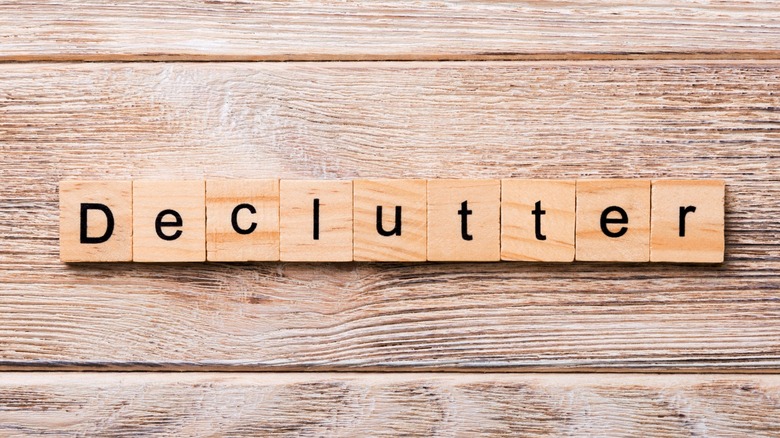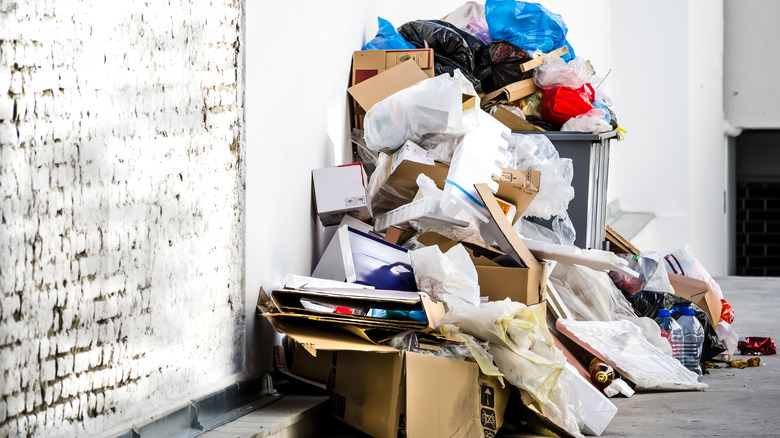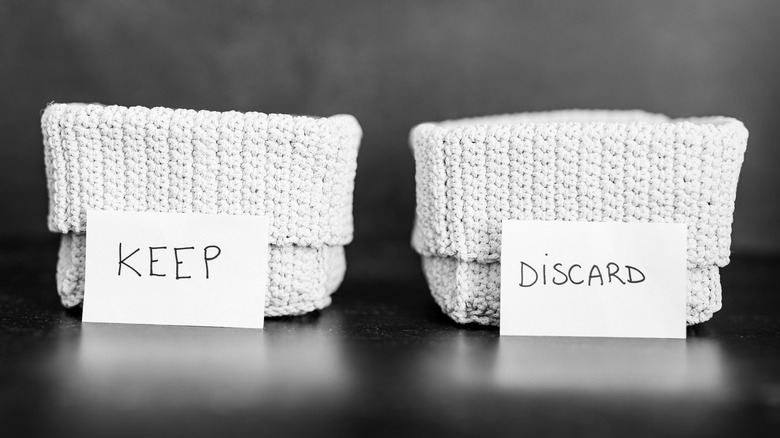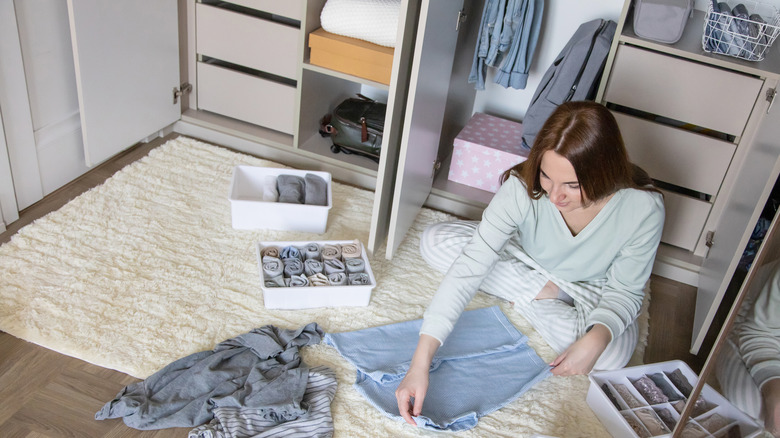How To Use The Six-Month Rule When Decluttering
Everyone is guilty of hoarding items in their homes that they don't really need. In fact, it's common for homeowners to find excuses and rationalize the need for not disposing of the things that aren't adding any value to the home. That said, decluttering is quite beneficial for both the home and yourself. Some of the benefits of decluttering your home include stress relief, improved productivity, and also a sharpened focus, per Utah State University Extension. When thinking of decluttering your space, sheer will and proper organization methods won't be enough, you also need the capacity to part ways with items that are no more than junk cluttering up your home.
Unfortunately, this isn't always as easy for everyone, therefore, you need a rule that you can fall back to when you start getting sentimental about some things in your possession. The six-month rule is by far one of the most effective ways of helping you know what to keep or discard. It'll help you stay objective as you sort through the rubble of mess that is in your space. Let's take a look at how you can effectively implement the six-month rule every time you're decluttering your space.
Why is it so hard to declutter
While there's a small percentage of people that enjoy decluttering, the vast majority dread this process. This is because decluttering often involves getting rid of things that sometimes you still want to keep. Holding on to things isn't just exclusive to extreme hoarders; as Greatist explains, sometimes it's a combination of the fear of being wasteful and the concern of letting go of the past. Truth is, the clutter in your space isn't just random things but possessions that do represent something to you.
What we buy is meant to bring joy and some people get the much-needed comfort from having a lot of things. Also, decluttering can be stressful for some people because the process involves unpacking the layers and getting to understand why you own certain things. Remember, change is never comfortable in the beginning, which might also explain why decluttering is often a tall order for people. However, a rule like the six-month rule can help provide structure to the process and make the case (when needed) to discard certain items you no longer use or need.
What is the six-month rule?
As mentioned earlier, staying objective through the process of decluttering is essential. Following the six-month rule will help you stop imagining future use of items that you haven't used for ages. The basic premise of the six-month rule is that you should dispose of any item that you haven't used for over six months. Another way of looking at this rule, according to Homes To Love, is to look forward and ask yourself whether you will use the item in the next six months. This is particularly true when decluttering the kitchen space.
Let's face it, most of the items you never use within this space of time (six months) are often not that important to you anyway, so letting them go is a good start to the decluttering process. The purpose of this rule is to remove discretion from decluttering, which ultimately settles the feeling of regret that is common when throwing away things. Although letting go of some of your possessions might feel daunting in the beginning, dealing with only a few essential items is way better — especially if you don't have enough storage.
How best to apply the six-month rule
Although the six-month rule is quite effective and works well for a lot of things, there are some exceptions that you need to keep in mind. It goes without saying that not everything needs to be thrown away after six months of storage; in this regard, this rule is only applicable to practical items for the most part. Phi Dang, the director of SidePost (via Livingetc), mentions that some of the rooms that the six-month rule is applicable to include the kitchen and the living room. When decluttering different spaces in your home, don't be too quick to dump everything that's been in storage (or non-use) for more than the recommended time.
For example, items like seasonal holiday decorations are only used a few times a year, so you might consider adjusting the six-month rule for such pieces. Other than holiday decorations, the new items that have been in storage and you haven't gotten a chance to use yet also shouldn't be thrown away. You might also want to hold on to items with sentimental value like souvenirs a bit longer. While you might not use them quite often, these items' sentimental value is enough to allow you to bend the six-month rule.
General tips for decluttering your home
It's worth mentioning once more that decluttering any space in a home is often a hard and tedious task. This is especially the case for those spaces with a lot of junk to sort through. One mistake that many homeowners make, however, is to pull out everything without a solid plan. You'll find the decluttering process easier if you deal with clutter one room at a time. As a general rule of thumb, the best place to start is in the rooms with the most storage.
This could be in the living room, kitchen, or even in the garage with overfilled storage spaces like shelves and drawers. Further, the Decluttering School notes you also need to figure out what your plan is with the stuff you do intend to keep, and that it'll be easier for organization purposes if you're only left with a few items to store. To identify those items, you could apply a rule like the six-month rule and see where you end up.




